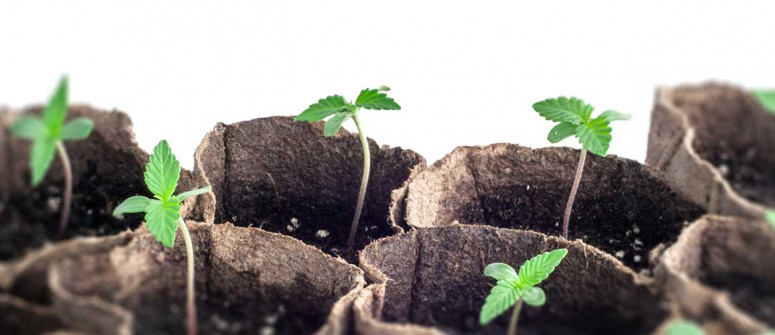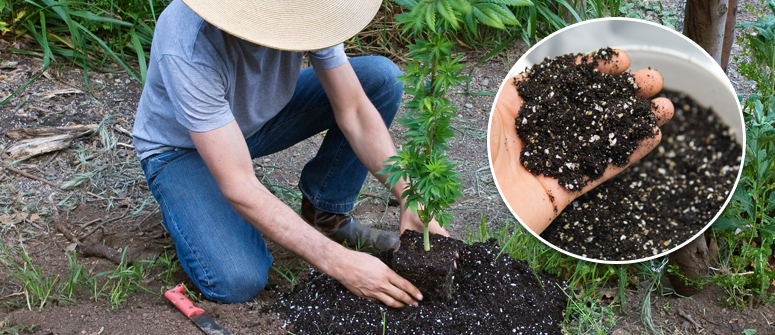Top considerations for your first cannabis grow

Growing your own cannabis can be a wonderfully fulfilling experience. However it takes planning, goal setting and practice.
Growing cannabis can seem like a confusing and intimidating process from an outside perspective. Although there are many variables that go into growing cannabis and harvesting a successful yield, the process can actually be simmered down to something simple. It’s very important for a novice to set some clear goals before diving into the process, to apply some structure to the grow cycle and make sure all important bases are covered.
Skill comes with practice. Later down the line, you can begin experimenting with various exotic growing techniques and tricks to boost yields, but for now, let’s stick to the basics. Below is a list of vital considerations and tips you should ponder to make the process as smooth and productive as possible. Let’s get growing!
DO YOU WANT TO GROW INDOORS OR OUTDOORS?

There are many advantages (and disadvantages) to growing both indoors and outdoors. Growing indoors allows control over almost all environmental factors including temperature, humidity, water, light, and airflow. In contrast, outdoor grows are exposed to the elements, and factors such as light and heat cannot be as easily controlled. However, the overhead for outdoor growing is minimal because you’ll use much less electricity in the process. Additionally, outdoor plants usually have much more space to grow, which then results in larger plants with larger yields.
Some growers are lucky enough to get to choose whether they want to grow indoors or outdoors. Others, however, are limited to one or the other. If you have zero outdoor space, then start to prepare for an indoor operation. You’ll need a good set of lights, a fan, and a grow tent (although you can grow in a room if available). Choose a suitable room in a relatively private part of your accommodation and set up your equipment.
If you choose to grow outside, choose an ideal part of your garden. You’ll want to place your plants in an area where they’ll receive as much sunlight as possible during the day. A spot with good-quality soil is also important if you plan on growing cannabis directly in the ground.
If you have no choice but to grow outside because you live in an area of prohibition, or people in your residence do not approve, you can grow in a secret location. This is known as guerrilla growing. Some of the most important decisions revolving around this type of grow include placing plants in a spot exposed to sunlight, and planting them away from flood-prone areas and places visited by hikers.
DECIDE WHICH STRAIN YOU WANT TO GROW
There are literally thousands of cannabis genetics available. Many of them are products of selective breeding, a process that allows growers to choose advantageous traits displayed by specific strains and cross them to create novel super-strains.
Strain selection will ultimately come down to personal preference and spatial limitations. Plus, some strains are more suited to growing indoors, and others outdoors. If growing outside, you may want to choose a large sativa or sativa-dominant strain that will make the most of your space and put out huge yields. Consider, though, that sativas tend to flower for much longer than indicas, which may not be ideal in colder climates with rainy autumns.
If you’re growing outdoors and want to minimize attention, or are growing indoors with limited space, try a pure indica or indica-dominant variety that grows to a smaller size. You might also want to consider growing an autoflowering variety. These plants don’t require a light cycle shift to begin flowering, are very hardy in nature, and go from seed to harvest extremely fast. Autoflowers are ideal for growers seeking speed and near-instant gratification.
CHOOSE THE LIGHTS YOU WANT TO USE
If you’re growing indoors, you’ll need a good lighting rig to enable your plants to photosynthesize optimally. There are numerous different types of lights to choose from, each with benefits and drawbacks.
LED lights are very popular among indoor growers as they are cheap to run, powerful, and give off very little heat.
Compact fluorescent lights (CFLs) are another popular light source. They are relatively cheap to buy, emit a good spectrum of light, and do particularly well in small grow spaces, although they aren’t suited to larger operations.
High pressure sodium (HPS) grow lights have experienced reliable use for decades, are quite cheap, and highly effective. Negatives include a significant amount of heat generated and a fair amount of energy expended.
DIAL IN HOW MUCH LIGHT YOUR PLANTS NEED
If you decide to grow a photoperiod strain, a variety that requires a change in light cycle to commence flowering, you’ll need to provide your plants with a different cycle from what you’d use to grow autoflowers.
Keeping things simple, most growers choose to vegetate their cannabis under 18 hours of light and 6 hours of total darkness. Once your plants have reached a desired size, switching the light cycle to 12 hours of light and 12 hours of darkness will signal to your plants that it’s time to begin flowering. Maintain this light cycle until it’s time to harvest. You can plug your lights into a timer to automate lighting schedules.
GIVE YOUR PLANTS THE NUTRIENTS THEY NEED

All plant life requires a certain amount of nutrients to survive and thrive. Many of these molecules are minerals that allow plants to carry out vital physiological processes. Plant nutrient demands fall into two categories: macronutrients and micronutrients. Macronutrients are substances that cannabis plants require in large doses. These include nitrogen (N), phosphorus (P), and potassium (K). Almost all plant fertilizer products will display this ratio, known as the N-P-K content. Cannabis plants also require micronutrients in the form of boron, chlorine, copper, iron, manganese, zinc, molybdenum, and nickel.
Once you gain a bit of experience, you can learn how to make your own nutrients using compost and other methods. However, as a first-time grower, the easiest option is to purchase pre-made formulas that contain all of these nutrients.
One important factor to consider as a beginner is the "law of the minimum." This principle states that even if a plant has all of the other nutrients it requires, if it has less than the minimum it requires for a single other nutrient, the plant will experience deficiency. Remembering this will help you craft your own formulas in the future, and avoid nutrient deficiency. However, be careful not to go the opposite way and overfeed your plants trying to compensate for this. Overfeeding can also lead to unhealthy plants.
PROVIDE YOUR PLANTS WITH A QUALITY GROWING MEDIUM
In this context, a medium refers to the substance that cannabis is grown in. Very often this is soil, which is perhaps the best option for the budding cannabis grower. Other cultivators choose water as a medium, a method known as hydroponics.
Not all soil is created equal. Some is of poor quality and devoid of nutrients. Other soil is loaded with minerals and has a better consistency. In general, cannabis prefers a dark and rich soil that is well-draining and won’t get muddy.
If you’re growing an autoflowering strain, you’ll want to create a more airy and less nutrient dense substrate, as this is what these varieties prefer. Autoflowers thrive in a mix of compost, perlite, and vermiculite.
KEEP YOUR SOIL SLIGHTLY ACIDIC
Cannabis plants thrive in more acidic soil. You can measure soil pH by using testing papers or pH-testing probes. Keep your soil within the range of 6–7 to allow them to uptake nutrients easier. If your reading shows that your soil is too alkaline, try adding cottonseed meal or iron sulfate. If it’s too acidic, try applying coffee grounds.
WATCH OUT FOR PESTS
Depending on your setup, you may need to enact some pest control protocol to protect your plants from infestation. Outdoor growers especially should be keeping a close eye on the tops and bottoms of leaves, the surface of the soil, and even the buds for any creepy-crawlies.
Not all bugs are bad. Ladybugs and rove beetles will actually devour other threats to your garden like mites and fungus gnats. It’s strongly advised to use organic pest control—never synthetic. After all, you’re going to smoke the end product! For any pest issues on the leaves, a foliar spray of neem oil solution should do the trick. Ensuring proper plant health can also prevent certain pests by avoiding ideal breeding conditions.
For larger pests like deer and other mammals, fences made from chicken wire and other structural support systems may be your best bet.
KEEP AN EYE ON HARVEST INDICATORS
After you’ve invested so much time and energy into raising a crop, it’s critical to harvest at the correct time to catch buds when they're at their best. There are numerous telltale signs that growers can look for to know when it’s time to harvest their flowers.
The best method is to zoom in on the trichomes. Trichomes are small, resin-producing glands that reside on the flowers and leaves. They are very hard to see with the naked eye, but are visible when using even a cheap magnifying glass. Keep an eye on the trichomes during the flowering phase. At first, they will appear translucent, but will eventually turn cloudy, and then amber. Harvest them when they are mostly cloudy for peak potency.
Another way to tell if your flowers are ripe is by looking at the small hairs known as pistils. Starting out white, they will take on an orange color as they mature. Once about 75% of pistils have changed color, it’s likely time to harvest.




